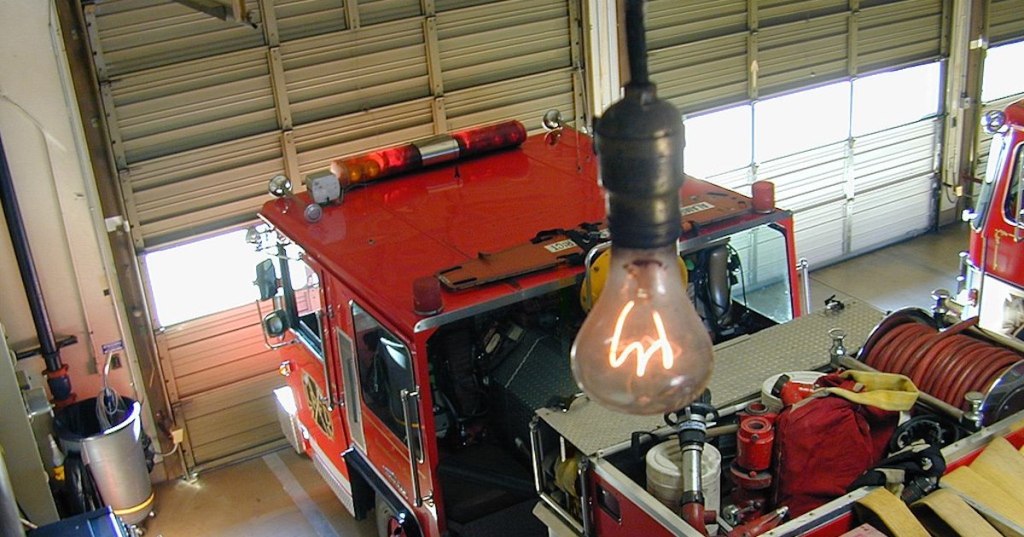CFL (compact fluorescent light) and LED technology last a long time (which is great), but they still don’t last nearly as long as this bulb has – it’s been burning since 1901.
It’s even outlasted the Shelby Electric Company, which manufactured it in 1898.
It hangs from a cord in the ceiling of the Livermore-Pleasanton Fire Department’s Fire Station #6, in Livermore California.
In 2015, the city held a party there to celebrate its one millionth hour of operation, where the town’s officials enjoyed food, drinks, and music while they toasted the bulb as it burned overheard.
Livermore is about an hour east of San Francisco.
If you want to view the bulb, you have to ring the bell at the back of the fire station and head into a shop area, where you’ll notice cameras pointed at the little burning light, because it has its own live stream.
This curious little piece of history was gifted to the fire department by businessman Dennis F. Bernal in 1901 – not purposely, but as part of a larger donation to the city.
John Jensen, who served as a Livermore firefighter starting in 1905, recalls the light always being on. The men used it as an emergency light, there to help them see any time of the day or night.
On May 20, 2013, the bulb went off in the early morning hours when its power supply malfunctioned.
A man watching the livestream in Australia alerted the firemen to the outage, which was fixed after 9 hours (and I’m sure a few heart palpitations).
There are 3 theories on why the bulb hasn’t burned out yet.
- Consistency: Some people think the fact that the bulb has only rarely been switched off and on has saved the filament. Without having to cool down and heat up on the regular, it saves whatever quality allows it to keep burning.
- It’s just one of those things: you know, a happy accident of the secret manufacturing process.
- They don’t make them like they used to: In late 1924, executives from GE, Philips, Tokyo Electric, Osram, Compagnie des Lampes, and other light bulb manufacturers met in Geneva and hatched a plan to limit the average light bulb’s life to around 1,000 hours – about half of the average at the time.
The town has a plan for the day the little bulb decides to retire: it will have a full funeral procession through town, ending at the historical society, where the bulb will rest in a place of honor.
